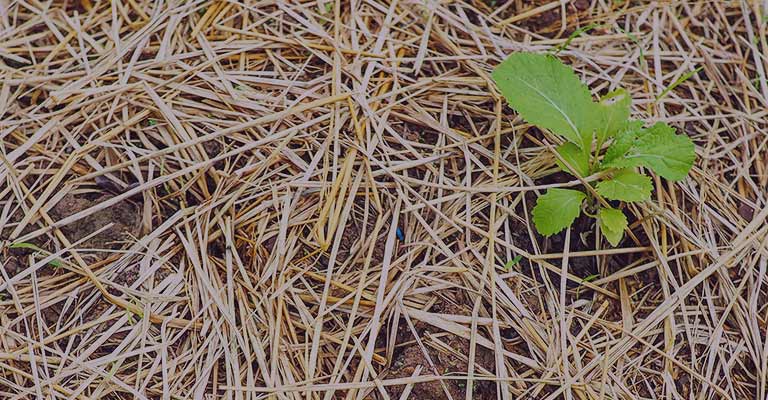
Why would anybody want to plant vegetables in a bale of straw? It might sound a little crazy, but straw bale gardening is a great technique if your soil is poor, if you’re tired of spading and weeding, or if you just want to try something different.
A few straw bales don’t take up a lot of space, and you can place your straw bale garden wherever you like it. Just think: At the end of the season, you can turn the bales into fantastic compost for next year.
Start small the first year. Although you can plant several bales if you have the space, you might be surprised how many veggies you can grow in a bale or two.
Straw bales are fairly inexpensive at feed stores or from local farmers, but be sure you’re purchasing straw and not hay. They aren’t the same.
Straw is the stems of plants like wheat, oats or barley, while hay is alfalfa or grass raised for animal feed. Hay is likely to have a lot of seeds that will cause you huge problems down the road. Clean straw won’t have many seeds, although you may see a few wheat or barley sprouts as the season progresses.
Conditioning the bale is the most involved part of the process. Begin by sprinkling the surface of the bale generously with a balanced, all-purpose fertilizer, then add more every other day for at least a week.
Water the bale every day, providing enough moisture to thoroughly saturate the bale. Always water immediately after applying fertilizer.
Add no more fertilizer after a week, but continue watering daily until the bale feels comfortably warm to the touch. If the straw feels hot, continue to water daily until it cools down.
Make a hole in the straw with a trowel, then plant the seedling in the hole. Fill in around the roots with commercial potting mix (not garden soil). Water gently and add more potting mix if the mix settles.
A straw bale can hold a total of two to six plants, depending on the size of the plant. For example, you could plant:
Many gardeners find that root crops like beets, potatoes, turnips and carrots aren’t well suited to straw gardening.
Some plants, including lettuce and beans, are easier to plant by seed. Just create a seed bed by spreading 2 or 3 inches (5 to 8 cm) of potting mix over the surface of the bale.
Water your straw garden daily in the absence of rain. Don’t allow the straw to dry out.
Feed plants an all-purpose granular or water-soluble fertilizer every other week, decreasing to one application per month when plants begin to bear fruit.
Subscribe to our newsletter to receive our gardening tips, news and more directly in your inbox! Fill in the form below. Please note that fields with an * are required.